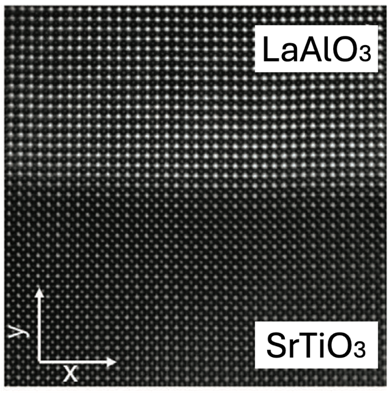Explore the offer
Growth & Synthesis / Physical depositions of thin films
Pulsed Laser Deposition

PLD is a physical vapor deposition technique in which the pulsed beam of a high-power ultraviolet laser is focused inside a vacuum chamber on a target. The target is usually a sintered ceramic or a single crystal with the chemical composition of the film that is to be deposited. A significant removal of material occurs above a certain threshold energy density (depending on the material, laser wavelength and pulse duration). The ejected material forms a luminous ablation plume directed towards a substrate placed front the target at a distance of 4-8 cm, where it re-condenses to form a film. Usually the plume (composed by neutrals, ions and electrons, and more complex species) conserves the stoichiometry of the target. The deposition can occur either in ultra-high-vacuum as well as in a background gas (up to 1 mbar) such as oxygen, which is commonly used when depositing oxides.
A main characteristic of PLD is that the ablated material only arrives at the substrate during a few microseconds after each the nanosecond laser pulse. It is also relevant that atoms and ions in the plume have an energy that can be controlled by the pressure during deposition and other parameters. PLD is compatible with in-situ and-real-time characterization tools, like reflection high-energy electron diffraction. A limitation of PLD is the small deposition area, generally less than 1 cm2 in standard set-ups (although a system for large area PLD up to 4 inches is available in the consortium). Another limitation is that the plume is highly directional, and thus not suitable for conformal deposition of non-flat substrates.
PLD has been used to deposit films of a variety of materials. It is extensively used to produce copper oxide superconductors, ferroelectric and ferromagnetic oxides, etc. Its use is not limited to grow complex oxides, but can be extended to other materials, including diamond-like carbon, refractory materials, 2D materials and even metals.

Available instruments
Select instruments to view their specifications and compare them (3 max)
Lab's Facility
Napoli
CNR-SPIN@NA
Milano
POLIMI-POLIFAB
Trieste